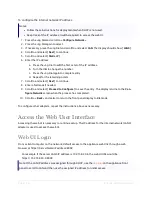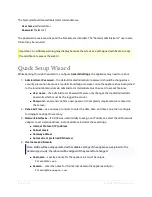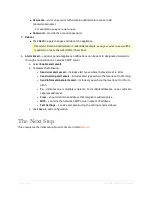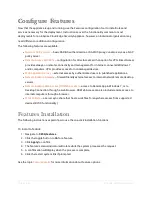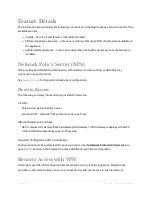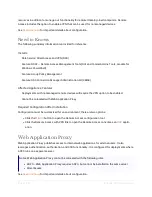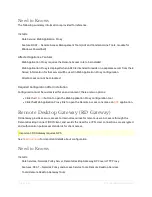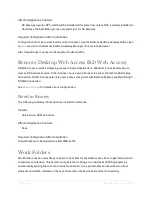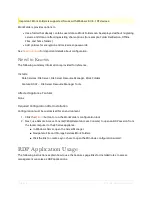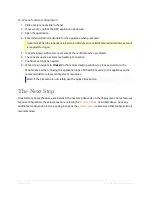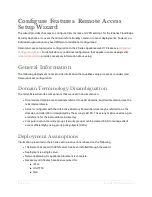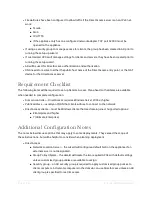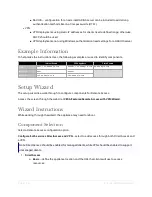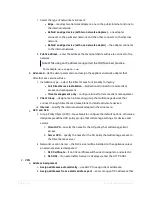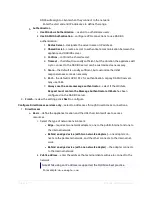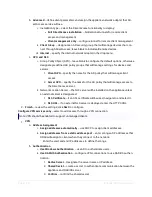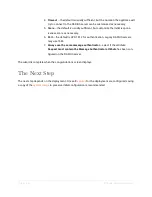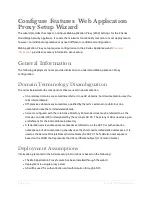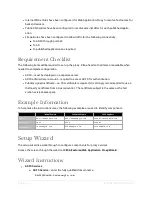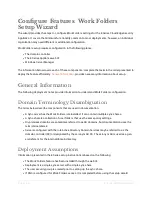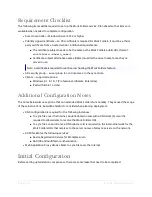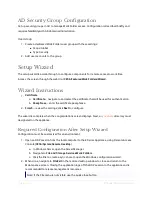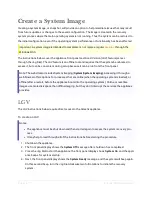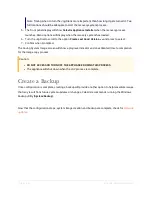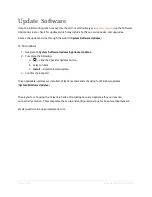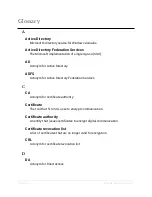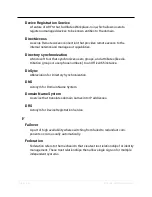
Page | 37
E Series Installation Guide
RRAS will assign to clients when they connect to the network.
Enter the start and end IP addresses to define the range.
b.
Authentication
i.
Use Windows Authentication
– use AD to authenticate users.
ii.
Use RADIUS Authentication
– configure VPN connections to use RADIUS
authentication.
1.
Radius Server
– designate the server name or IP address.
2.
Shared Secret
– create a secret to authenticate communication between the
appliance and RADIUS server.
3.
Confirm
– confirm the shared secret.
4.
Timeout
– the default is usually sufficient, but the duration the appliance will
try to connect to the RADIUS server can be customized as necessary.
5.
Score
– the default is usually sufficient, but customize the initial
responsiveness score as necessary.
6.
Port
– the default is UPD 1812 for authentication. Legacy RADIUS servers
may use 1646.
7.
Always use the same message authenticator
– select if the attribute
Request must contain the Message Authenticator attribute
has been
configured on the RADIUS server.
3.
Finish
– review the settings; click
Next
to configure.
Configure DirectAccess services only
– select to add access through DirectAccess connections.
1.
DirectAccess
a.
Basic
– define the appliance location and the URL that clients will use to access
resources.
i. Select the type of network environment:
l
Edge
– requires two network adapters; one to the public Internet and one to
the internal network.
l
Behind an edge device (with two network adapters)
– one adapter con-
nects to the perimeter network, and the other connects to the internal net-
work.
l
Behind an edge device (with one network adapter)
– the adapter connects
to the internal network.
ii.
Public address
– enter the address that external clients will use to connect to the
network.
Note: While using an IP address is supported, the FQDN is a best practice.
For example:
da.example.com

